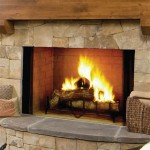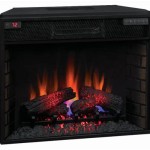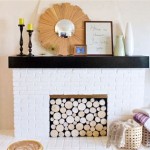The Nomenclature of an Indoor Fireplace: Understanding "Fireplace In House Is Called"
The phrase "Fireplace In House Is Called" highlights a fundamental aspect of residential architecture and home design. While the statement itself is a query leading to a variety of nuanced answers, the essential response centers around the term "fireplace" itself. A fireplace, in its most basic definition, is a structural recess or chamber built at the base of a chimney. The purpose of this chamber is to contain a fire, typically for heating, cooking, or aesthetic purposes within a dwelling. However, the specific terminology and associated features can vary depending on regional dialects, architectural styles, and technological advancements.
The concept of a fireplace extends beyond merely a designated area for combustion. It encompasses a complex integrated system designed for safe and efficient fire management and smoke evacuation. This system typically includes the firebox, the chimney, the damper, and often a hearth extending outwards into the room. Understanding each of these components and their roles is crucial when discussing the terminology associated with a "Fireplace In House."
Historically, fireplaces were central to domestic life, serving as the primary source of heat and a focal point for cooking and gathering. As heating technologies have evolved, fireplaces have transitioned from essential utilities to decorative elements, often valued for their ambiance and visual appeal. Nevertheless, their fundamental structure and purpose remain largely unchanged.
Key Component Terminology: The Anatomy of a Fireplace
The understanding of a "Fireplace In House" is greatly enhanced by familiarity with its individual parts. Each component contributes to the fireplace's functionality and overall design.
The Firebox: The firebox is the actual chamber where the fire is built. It is typically constructed of fire-resistant materials such as firebrick or cast iron, designed to withstand the intense heat generated by combustion. The dimensions and shape of the firebox can vary considerably, affecting the efficiency and aesthetics of the fireplace. Some fireboxes are designed with specific angles or curves to radiate heat more effectively into the room. Others include features designed to improve airflow and combustion efficiency.
The Chimney: The chimney is the vertical structure that carries smoke and other combustion byproducts away from the firebox and out of the house. Chimneys are typically constructed of brick, stone, or metal, and are designed to create a draft that draws air into the firebox and expels smoke upwards. Proper chimney construction and maintenance are crucial for safe and efficient fireplace operation. Obstructions or damage to the chimney can lead to dangerous smoke buildup within the house. Chimneys may be lined with clay tiles or metal liners to protect the chimney structure from the corrosive effects of combustion gases.
The Damper: The damper is a movable plate or valve located within the chimney, typically above the firebox. The damper's primary function is to control the airflow through the chimney. When the fireplace is in use, the damper is opened to allow smoke to escape. When the fireplace is not in use, the damper is closed to prevent heat loss from the house and to keep out drafts, rain, and animals. However, a closed damper can also trap moisture and create a breeding ground for mold. Modern dampers may be located at the top of the chimney (top-sealing dampers) to provide a more airtight seal.
The Hearth: The hearth is the non-combustible area in front of the fireplace opening. Its purpose is to protect the flooring from sparks and embers that may escape from the firebox. Hearths are typically constructed of brick, stone, tile, or other fire-resistant materials. The size and shape of the hearth are dictated by building codes and safety regulations, ensuring adequate protection against fire hazards. The hearth also serves as a decorative element, often complementing the overall design of the fireplace and the surrounding room.
The Mantel: While not essential to the fireplace's function, the mantel is a shelf or decorative structure above the firebox. Mantels are typically made of wood, stone, or other materials and serve as a focal point for decorating or displaying objects. Mantels also provide a degree of heat shielding for combustible materials above the fireplace opening. The distance between the top of the firebox opening and the mantel is typically specified by building codes to prevent fire hazards.
Surround: This refers to the decorative material that immediately surrounds the firebox opening. It can be made of various materials such as brick, stone, tile, or wood. The surround’s primary purpose is aesthetic, contributing to the overall style and character of the fireplace.
Specific Fireplace Types and Related Terminology
The term "Fireplace In House" encompasses a range of fireplace types, each with its own nuances and associated terminology. Understanding these distinctions is important for accurate identification and communication.
Wood-Burning Fireplaces: This is the most traditional type of fireplace, relying on the combustion of wood as its fuel source. Wood-burning fireplaces are characterized by their natural flames, crackling sounds, and distinctive aroma. However, they also require more maintenance than other types of fireplaces, including wood storage, ash removal, and chimney cleaning. Wood-burning fireplaces may be open-hearth designs or feature glass doors to improve efficiency and safety. The efficiency of a wood-burning fireplace can vary greatly depending on its design and operation.
Gas Fireplaces: Gas fireplaces use natural gas or propane as their fuel source. They offer convenience and ease of use compared to wood-burning fireplaces, as they can be ignited with the flip of a switch or the press of a button. Gas fireplaces also produce less ash and require less maintenance. They are typically more efficient than traditional wood-burning fireplaces, converting a higher percentage of fuel energy into heat. Gas fireplaces can be vented directly through the wall or roof, or they can be vent-free, relying on oxygen depletion sensors for safe operation. Vent-free gas fireplaces are subject to specific regulations and may not be permitted in all jurisdictions.
Electric Fireplaces: Electric fireplaces are heating appliances that simulate the appearance of a fire using electric heating elements and artificial flames. They offer the greatest convenience and ease of installation, as they require no venting or fuel supply. Electric fireplaces are often portable and can be moved from room to room. They are typically less expensive to operate than gas or wood-burning fireplaces. However, electric fireplaces primarily provide supplemental heat and may not be suitable as a primary heating source in cold climates. The aesthetic quality of electric fireplace flames can vary greatly depending on the technology used.
Pellet Stoves: While technically stoves, pellet stoves share similarities with fireplaces as they provide heat through combustion. Pellet stoves burn compressed wood pellets, offering a more efficient and cleaner-burning alternative to traditional wood-burning fireplaces. Pellet stoves require electricity to operate, powering the auger that feeds pellets into the firebox, along with the blower that circulates heated air. Pellet stoves typically produce less smoke and ash than wood-burning fireplaces. They also offer more precise temperature control.
Regional Variations and Architectural Styles in Fireplace Design
The term "Fireplace In House" can also be influenced by regional variations in terminology and architectural styles. Different regions may have their own colloquial terms for specific fireplace components or design features. Moreover, various architectural styles are characterized by distinctive fireplace designs, reflecting the aesthetic preferences and building traditions of specific eras and locations.
For example, in some regions, the term "inglenook" refers to a recessed area beside a large fireplace, providing a sheltered and cozy space for seating. This feature is particularly common in traditional English and American homes. The size and style of the inglenook can vary depending on the architectural style of the house.
Similarly, the term "Rumford fireplace" refers to a specific fireplace design developed by Count Rumford in the late 18th century. Rumford fireplaces are characterized by their shallow fireboxes and angled sides, which are designed to radiate heat more efficiently into the room. Rumford fireplaces are often found in historical homes and are prized for their elegant design and heating performance.
The architectural style of a house can also influence the design of the fireplace. For example, Victorian homes often feature ornate fireplaces with elaborate mantels and decorative tilework. In contrast, modern homes may feature minimalist fireplaces with clean lines and simple designs. The materials used for the fireplace surround and hearth can also vary depending on the architectural style, reflecting the overall aesthetic of the house.
Ultimately, the understanding of what a "Fireplace In House Is Called" necessitates consideration for its component parts, its type, and its contextual placement within the broader architectural and regional landscape. The fireplace, regardless of specific designation or style, remains a significant element in the design and function of a home, providing both warmth and visual appeal.
The safety and correct operation of a fireplace, particularly a wood-burning one, are paramount. Regular inspections and cleaning of the chimney by a qualified professional are essential to prevent chimney fires and carbon monoxide poisoning. Also, ensuring proper ventilation and using seasoned wood are crucial for efficient and safe burning.
Furthermore, advancements in technology have led to the development of more efficient and environmentally friendly fireplace options. Consider factors like energy efficiency, emissions, and maintenance requirements when choosing a fireplace for a house. The best option will depend on individual needs, preferences, and budget.
Fireplace Wikipedia

Fireplace Simple English Wikipedia The Free Encyclopedia

11 Diffe Kinds Of Indoor Fireplaces Compactappliance Com

Parts Of A Fireplace Chimney Explained With Diagrams And Real S

What Are The Components Of A Fireplace Five Ways Fires

5 Types Of Fireplaces For Apartments Homes Without Chimneys Modern Blaze

Q We Live In A House With So Called Decorative Fireplace Meaning It Once Was Usable But Now Just Sits There Chicago

The Anatomy Of Fireplace

Fireplace Mantel Wikipedia

How To Build An Indoor Fireplace The Constructor
Related Posts








